Ever felt like you’re drowning in a sea of backpack options? Yeah, I get it. Finding the best camping backpack can be a real pain in the bum.
You’re probably thinking, “How am I supposed to choose with all these fancy features and sky-high price tags?” It’s enough to make you want to chuck the whole idea and just carry your gear in bin bags!
But here’s the thing: you’re not alone in feeling overwhelmed. Every camper’s been there, staring at a wall of backpacks, wondering if they’re about to make a massive mistake. It’s properly stressful, isn’t it?
Don’t worry, though. We’re going to sort this out together. I’ll help you navigate this backpack jungle and find your perfect match. No more sweating the small stuff or second-guessing yourself. Let’s start, shall we?
Table of Contents
Understanding Camping Backpack Types
When you’re on the hunt for the best camping backpack, it’s crucial to understand the different types available. Let’s break it down, shall we?
Internal frame vs. external frame backpacks
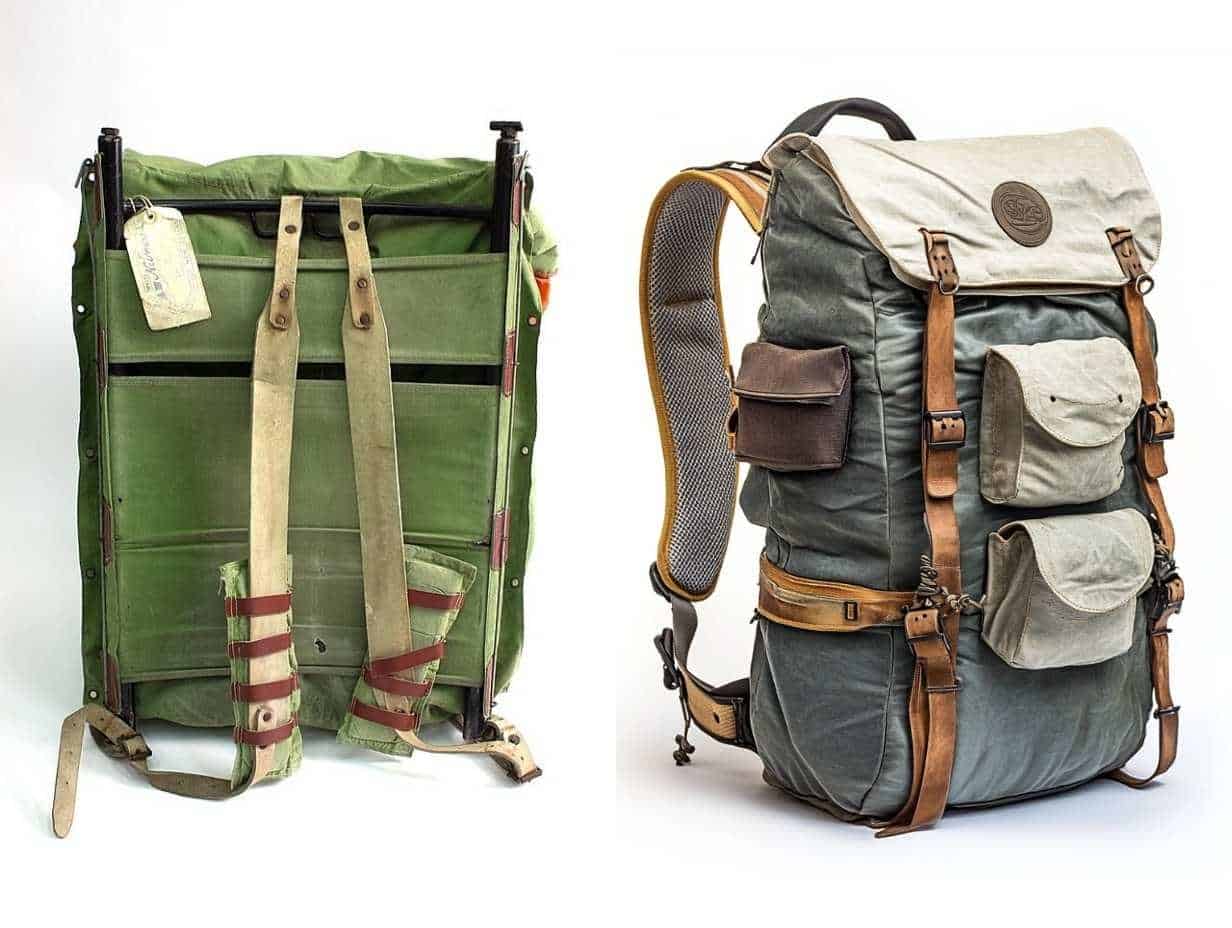
Back in the day, external frame backpacks were all the rage. Picture a metal frame with a pack strapped to it – that’s your classic external frame. They’re great for hauling heavy loads and keeping your back ventilated, but they’re not exactly sleek.
These days, internal frame backpacks are the go-to choice for most campers. They’ve got a hidden frame inside the pack itself, which hugs your body like a koala on a eucalyptus tree.
This design keeps the weight close to your body, making it easier to balance on tricky terrain. Plus, they’re less likely to snag on branches when you’re bushwhacking through the wilderness.
Day packs vs. multi-day backpacks
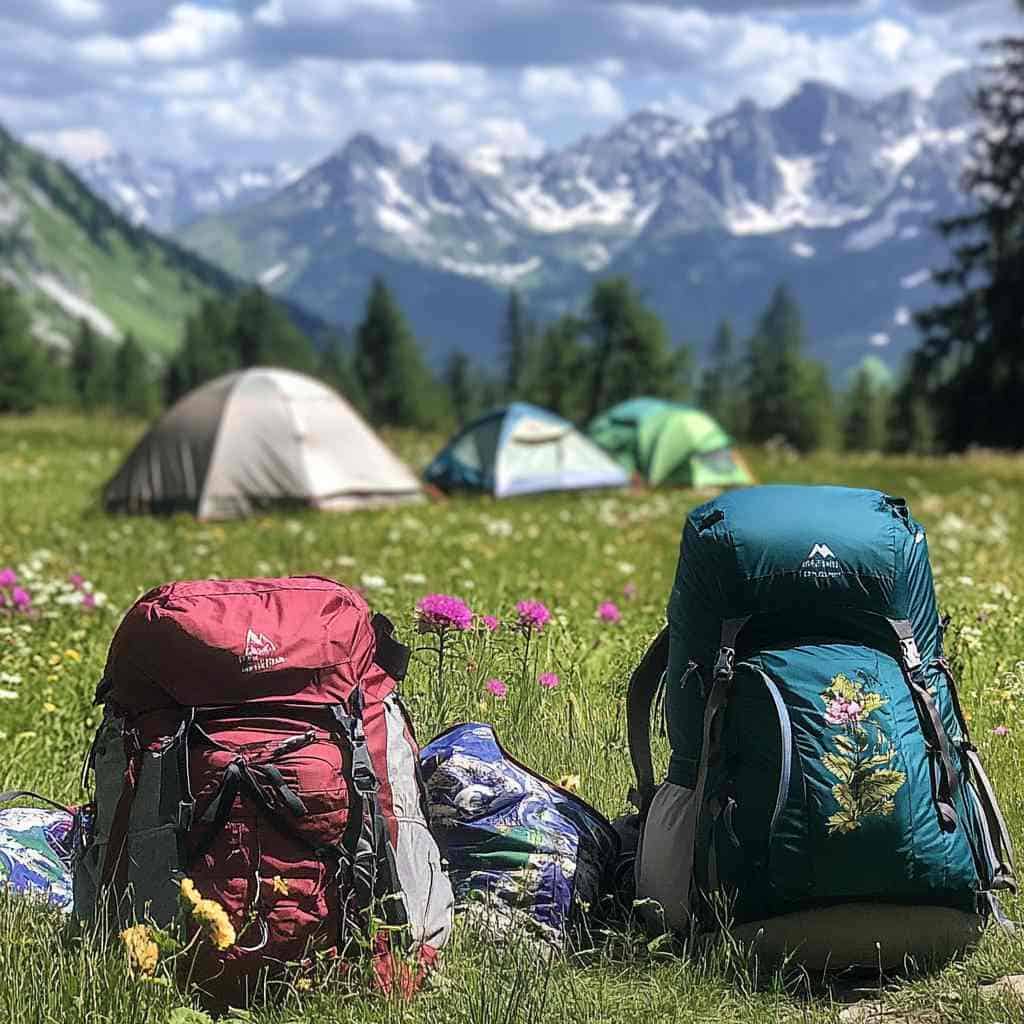
Think of day packs as the sprinters of the backpack world. They’re lightweight, typically ranging from 20 to 35 litres, and perfect for those quick jaunts into the great outdoors. You’ll have enough room for some snacks, a rain jacket, and maybe a cheeky thermos of tea.
Multi-day backpacks, on the other hand, are the marathon runners. These bad boys range from 50 to 80 litres and are built for those long days on the trail. They’ve got space for all your camping gear, extra layers, and enough food to keep you fuelled for days. Just remember, with great capacity comes great responsibility – don’t be tempted to overpack!
Ultralight backpacks for minimalist campers
For those of you who count every gramme and wouldn’t dream of carrying more than the bare essentials, ultralight backpacks are your holy grail. These packs typically weigh less than a kilogramme and have a capacity of 40 to 50 litres.
They’re often made from cutting-edge materials like ultra-high molecular weight polyethylene, which sounds like something out of a sci-fi novel but is actually just incredibly strong and lightweight. The trade-off? You might sacrifice some comfort and durability. But hey, no pain, no gain, right?
Key Features to Look for in a Camping Backpack
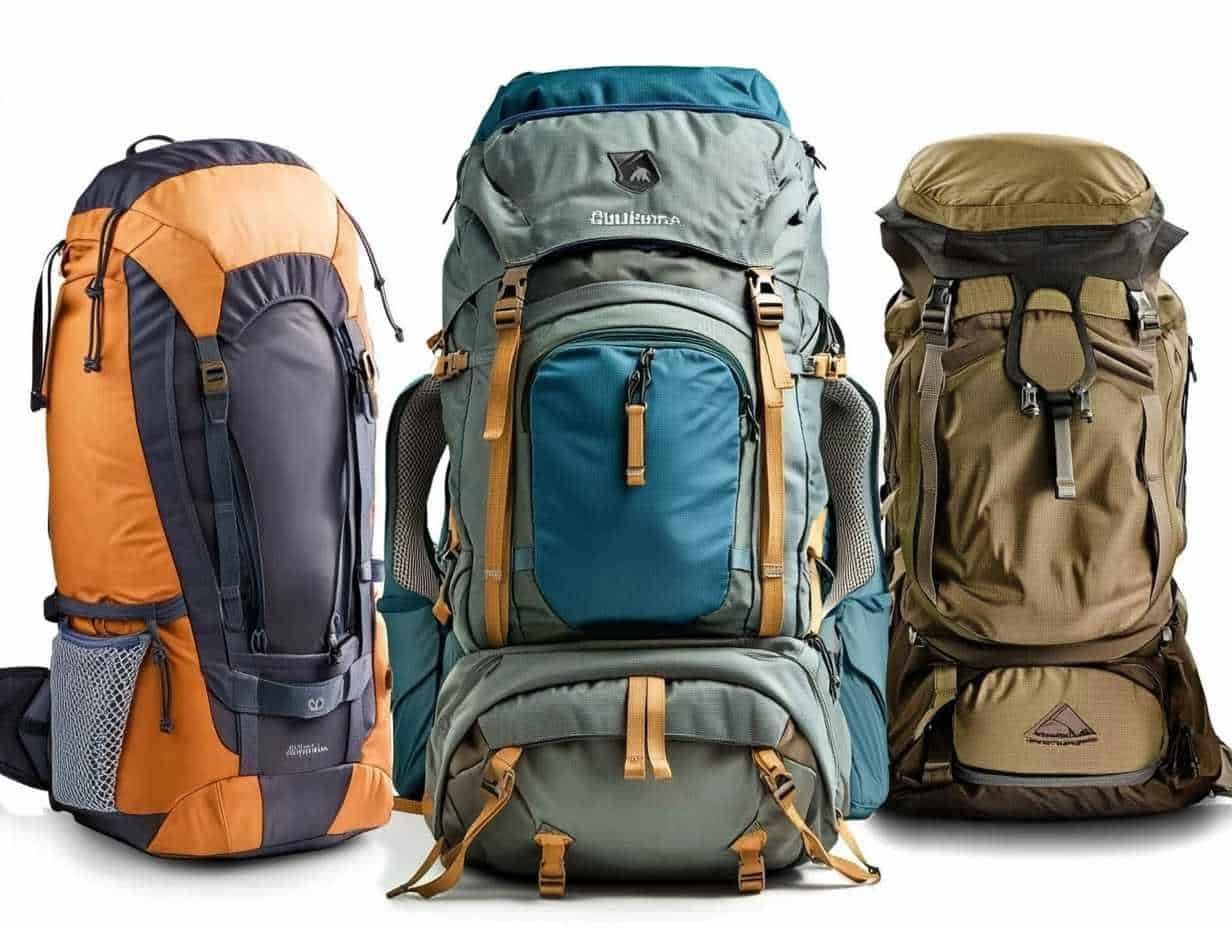
Now that we’ve covered the types, let’s dive into the nitty-gritty of what makes a great camping backpack. It’s not just about looking cool (though that doesn’t hurt) – it’s about finding a pack that’ll be your trusty sidekick on all your adventures.
Capacity and size considerations
Size matters, folks! But bigger isn’t always better. You want a pack that’s big enough to carry all your gear, but not so massive that you’re tempted to bring the kitchen sink.
When choosing your pack size, don’t forget to account for bulky items like sleeping pads. These unsung heroes of a good night’s sleep can take up more space than you’d think!
For weekend warriors, a 50 to 60-litre pack should do the trick. Planning a week-long expedition? You might want to bump up to a 65 to 80-litre beast.
Just remember, the more space you have, the more you’ll be tempted to fill it. And trust me, your back won’t thank you for that extra pair of shoes you’ll never wear.
Comfort features (padded straps, hip belts, load-lifter straps)
Comfort is king when you’re lugging a pack for hours on end. Look for shoulder straps and hip belts that are well-padded and adjustable. The hip belt should sit right on top of your hip bones, taking the weight off your shoulders.
Load-lifter straps are the unsung heroes of the backpack world. These little beauties connect the top of the shoulder straps to the pack, pulling the weight closer to your back. It’s like magic – suddenly, your pack feels lighter!
Don’t underestimate the power of a good sternum strap. This little beauty helps distribute weight across your chest, keeping those shoulder straps in place when you’re scrambling over boulders or ducking under branches.
Durability and water resistance
Nobody wants their pack to fall apart halfway up a mountain. Look for backpacks made from tough materials like ripstop nylon. Some packs come with a built-in rain cover, which is handy for those unexpected downpours. If yours doesn’t, consider investing in one separately – your dry socks will thank you.
Organisation and accessibility (pockets, compartments, attachment points)
When it comes to access to the main compartment, you’ve got options. Top-loading packs are great for keeping gear dry, but if you’re tired of playing ‘find the sock’ every time you need something, look for packs with front or side zips. It’s like having a secret passage to your gear!
A well-organised pack is a happy pack. Look for a mix of internal and external pockets to keep your gear sorted. Side pockets are great for water bottles or snacks you want to grab quickly. A top lid with zippered pockets is perfect for small items like your phone or map.
Some packs have a sleeping bag compartment at the bottom, which is a godsend for keeping your cosy cocoon separate from the rest of your gear. And don’t forget about attachment points for trekking poles or an ice axe – you never know when you might need them!
Ventilation systems
There’s nothing worse than a sweaty back when you’re trying to enjoy the great outdoors. Many modern packs come with fancy ventilation systems that create a gap between the pack and your back. It’s like having your own personal air conditioning system. Fancy, eh?
Our Top 10 Camping Backpacks for 2024
Right, let’s get down to brass tacks. Here are our top picks for the best backpacking backpacks of 2024. We’ve put these through their paces to bring you the crème de la crème of gear haulers. Remember, the best backpack for you depends on your specific needs, but these are all solid choices that won’t let you down on the trail.
Best Overall: Osprey Atmos AG 65
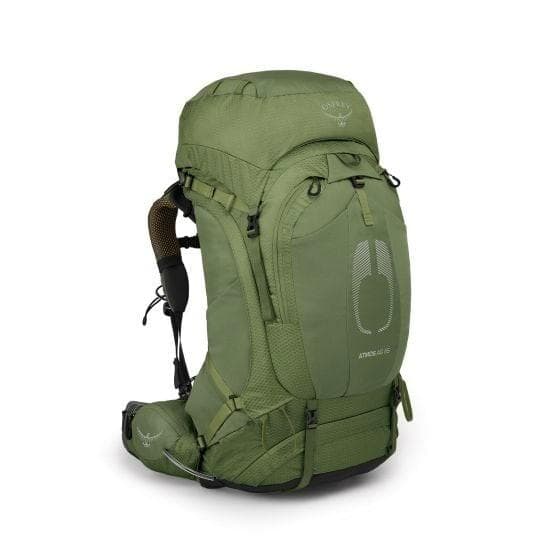
The Osprey Atmos AG 65 is the Swiss Army knife of backpacks. It’s got a bit of everything, and it does it all well. The Anti-Gravity suspension system feels like you’re wearing a cloud, even when you’re carrying a week’s worth of gear.
With plenty of pockets and attachment points, it’s a dream for organisers. The only downside? It’s not the lightest pack out there, but the comfort more than makes up for it.
| Product Name | Capacity | Ideal Use | Price |
|---|---|---|---|
| Osprey Atmos AG 65 | 65L | Multi-day trips, comfort | £230 |
Best Budget-Friendly Option: REI Co-op Flash 55
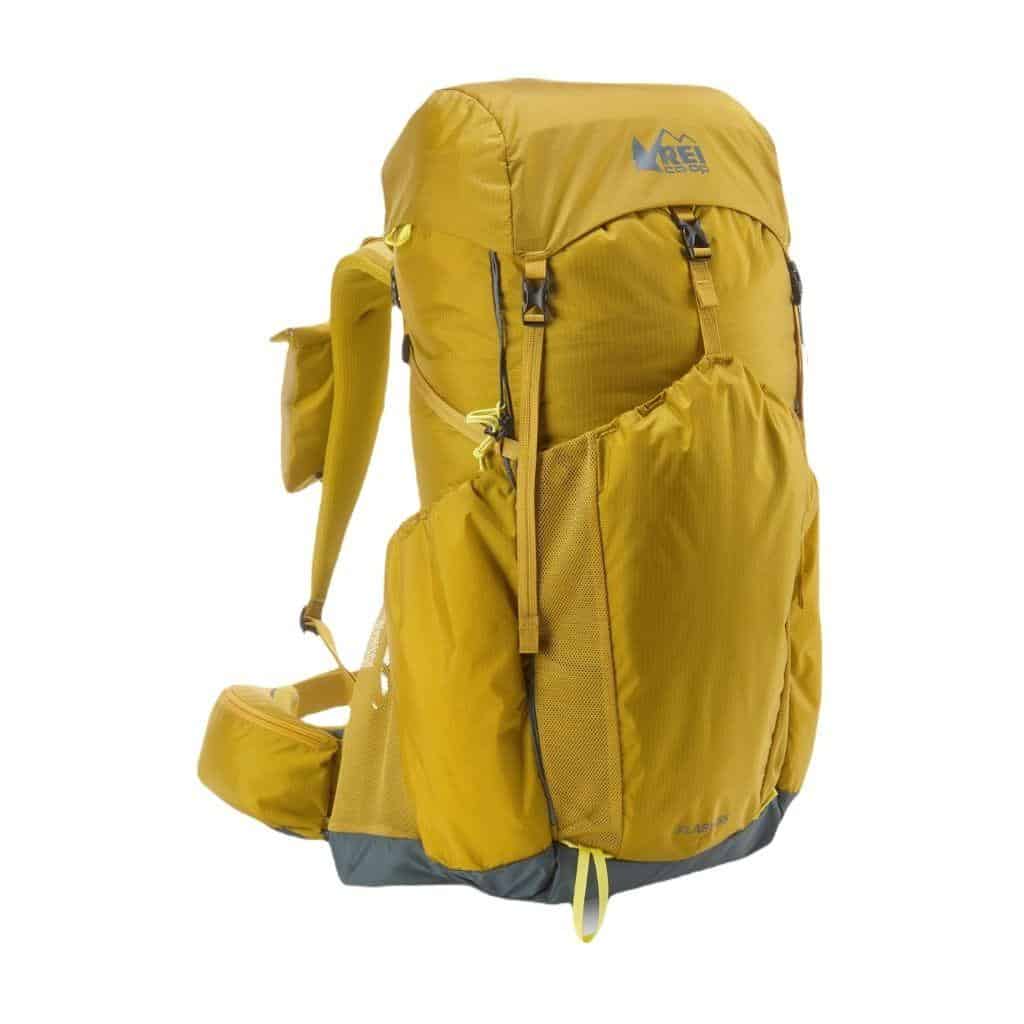
Don’t let the price tag fool you – the REI Co-op Flash 55 punches well above its weight. It’s lightweight, comfortable, and has all the features you need for a weekend in the wilderness.
The customisable compression straps are a nice touch, letting you cinch down your load for a more stable carry. It might not have all the bells and whistles of pricier packs, but it’s got everything you need and nothing you don’t.
If the 55 isn’t available, a good alternative would be the REI Co-op Trailmade 60.
| Product Name | Capacity | Ideal Use | Price |
|---|---|---|---|
| REI Co-op Flash 55 | 55L | Budget-friendly multi-day backpack | $199 |
| REI Co-op Trailmade 60 | 60L | Budget-friendly beginner backpack | $179 |
Best for Long Treks: Gregory Baltoro 75
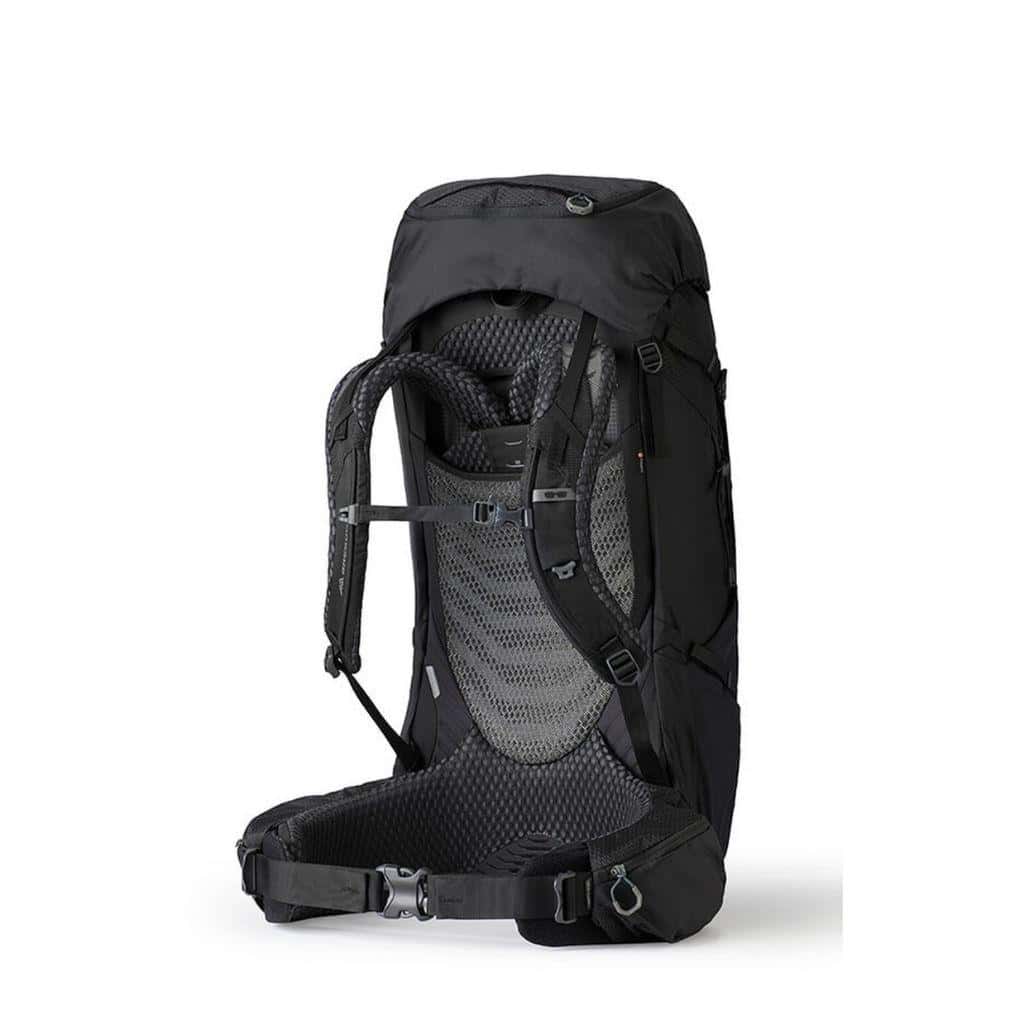
If you’re planning on spending more time on the trail than off it, the Gregory Baltoro 75 is your new best friend. This pack is built for comfort on long-hauls, with a responsive suspension system that adapts to your body and movement.
The 75-litre capacity means you can pack for extended trips. And the multiple access points make it easy to grab what you need without unpacking everything. A good alternative is the Osprey Aether 65.
| Product Name | Capacity | Ideal Use | Price |
|---|---|---|---|
| Gregory Baltoro 75 | 75L | Long treks, heavy loads | £260 |
| Osprey Aether 65 | 65L | Long trips, heavy loads | £195 |
Best Ultralight Backpack: Hyperlite Mountain Gear Southwest 55
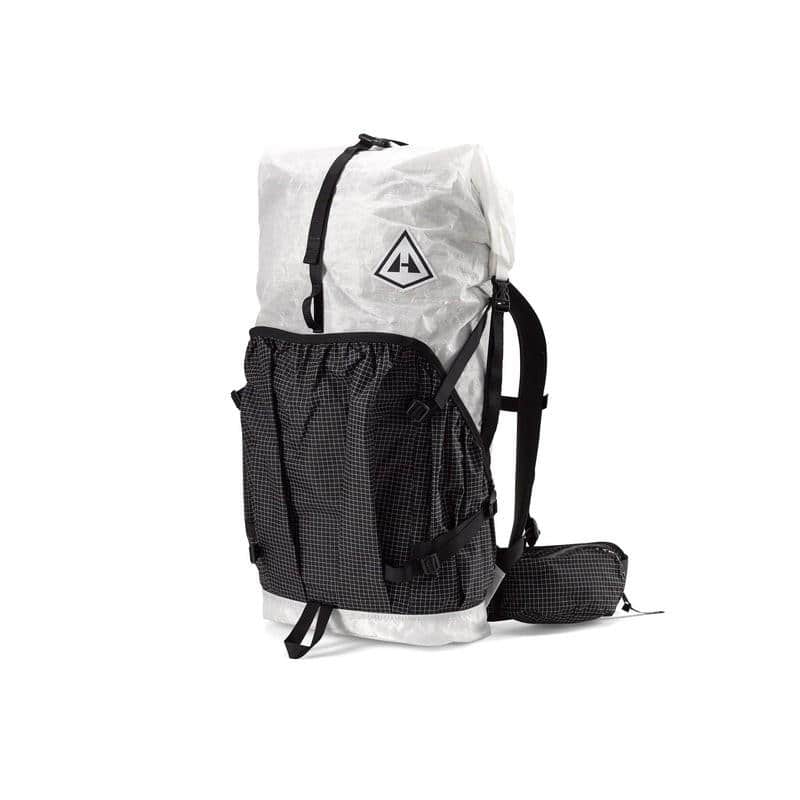
For the gramme counters out there, the Hyperlite Mountain Gear Southwest 55 is a dream come true. Made from Dyneema Composite Fabric, it’s incredibly light but tough as nails.
At just over a kilogramme, it won’t weigh you down, but it still has enough capacity for multi-day trips. The roll-top closure keeps your gear dry in any weather, though you might want to invest in some packing cubes for organisation.
A great alternative to the Southwest 55 is the Gossamer Gear Mariposa 60.
| Product Name | Capacity | Ideal Use | Price |
|---|---|---|---|
| Hyperlite Mountain Gear Southwest 55 | 55L | Ultralight backpacking | $379 |
| Gossamer Gear Mariposa 60 | 60L | Lightweight, multi-day hikes | $315 |
Best for Organisation: Deuter Aircontact Core 65+10
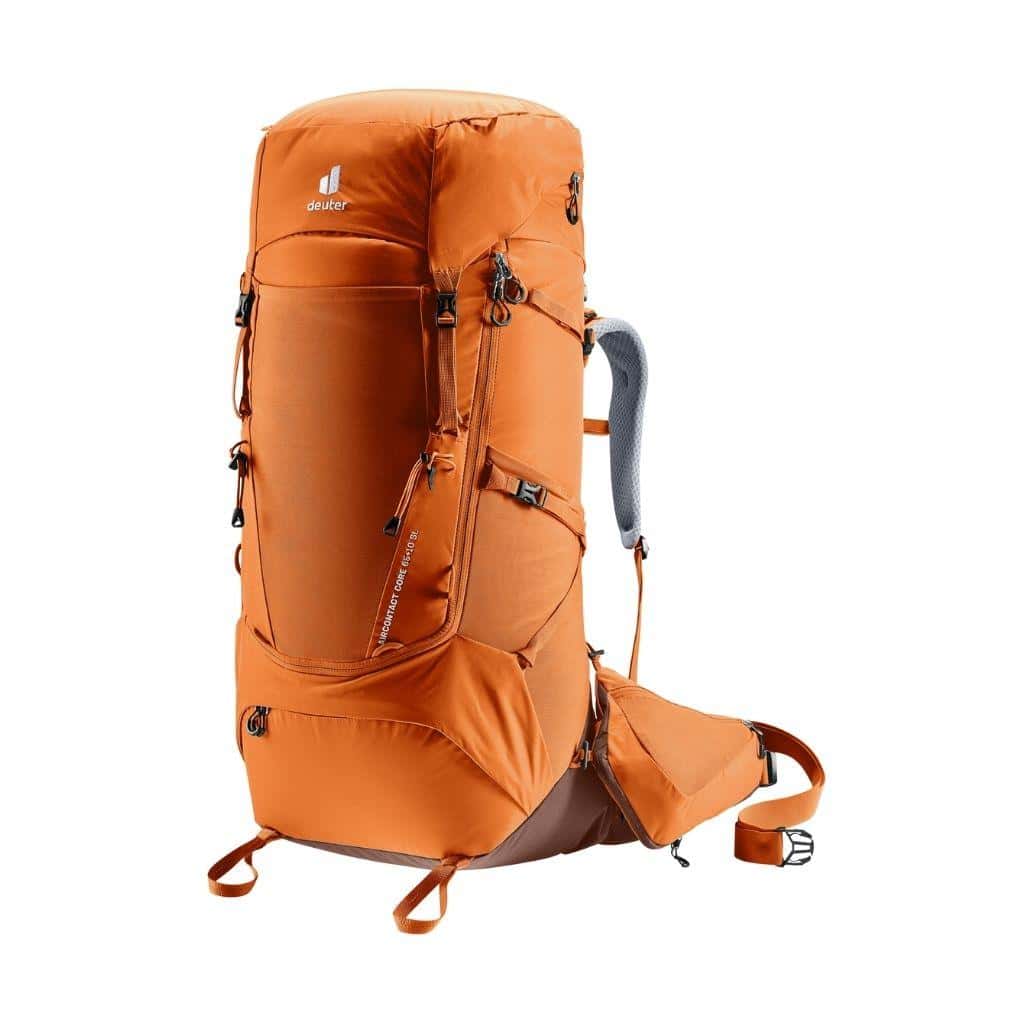
If you’re the type who likes a place for everything and everything in its place, the Deuter Aircontact Core 65+10 is calling your name. With multiple compartments, including a separate sleeping bag section and an expandable collar for extra capacity, you’ll never struggle to find your headlamp again.
The Aircontact back system keeps you cool and comfortable, even when you’re fully loaded up.
A great alternative to the Deuter is the Near Zero The Dean 55L.
| Product Name | Capacity | Ideal Use | Price |
|---|---|---|---|
| Deuter Aircontact Core 65+10 | 65+10L | Well-organised multi-day backpack | £280 |
| Near Zero The Dean 55L | 55L | Internal storage, easy access | $155 |
Best for Comfort: Granite Gear Blaze 60
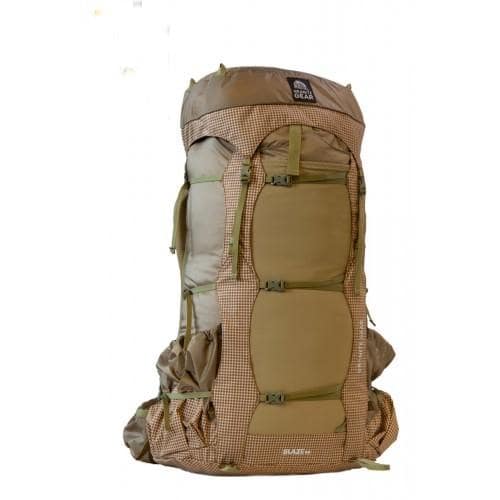
The Granite Gear Blaze 60 is like wearing your favourite armchair on your back. The fully adjustable harness system means you can customise the fit to your body, while the moulded foam back panel provides excellent ventilation.
Despite its plush comfort, it’s surprisingly lightweight for its size. The only catch? Some users find the hip belt pockets a bit small for modern smartphones.
A great alternative to the Blaze 60 is the Osprey Atmos AG 65.
| Product Name | Capacity | Ideal Use | Price |
|---|---|---|---|
| Granite Gear Blaze 60 | 60L | Comfortable, long treks | £270 |
| Osprey Atmos AG 65 | 65L | Multi-day trips, comfort | £234 |
Best for Durability: Fjällräven Kajka 65
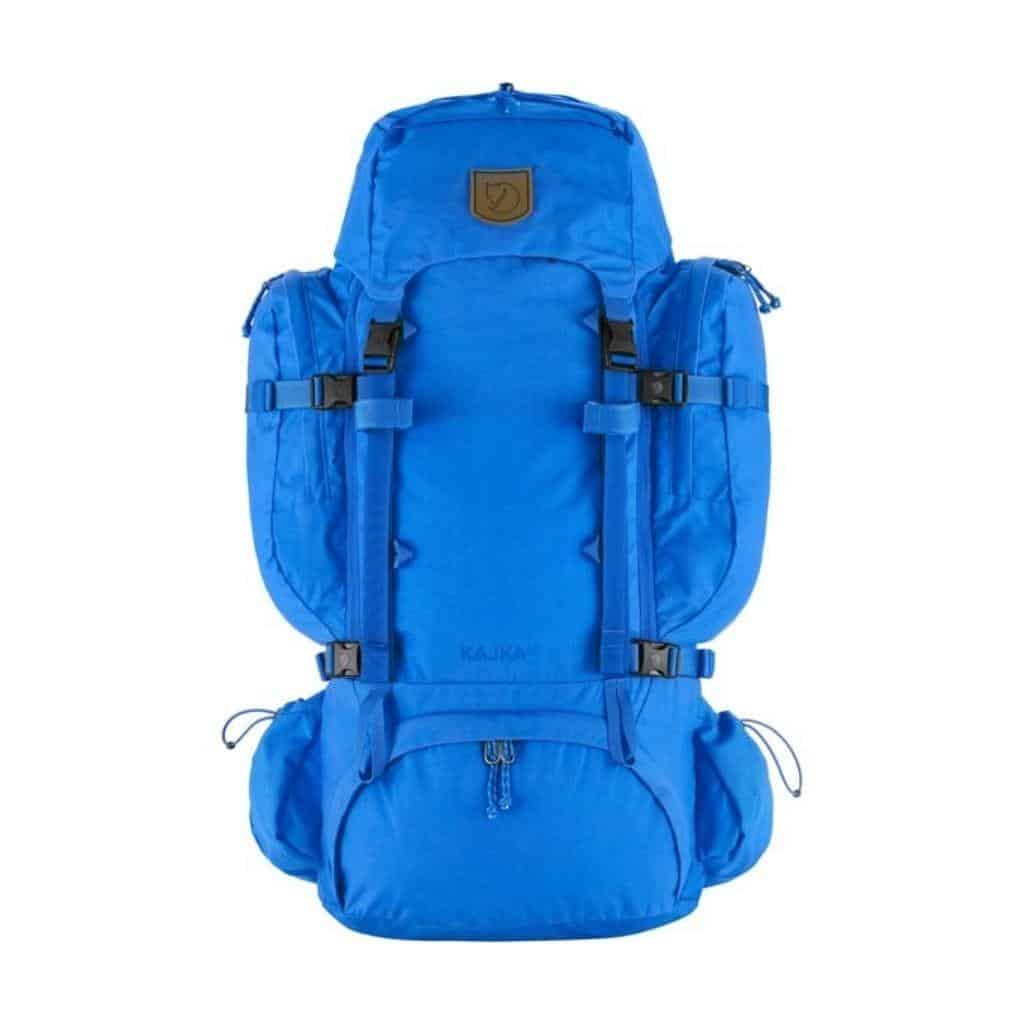
Built to last a lifetime (or two), the Fjällräven Kajka 65 is the tank of backpacks. Made from eco-friendly materials, including a wooden frame, this pack can take a beating and come back for more.
The innovative Perfect Fit Adjustment System ensures a comfortable carry, while the multiple access points make packing and unpacking a breeze. It’s on the heavier side, but if durability is your top priority, look no further.
| Product Name | Capacity | Ideal Use | Price |
|---|---|---|---|
| Fjällräven Kajka 65 | 65L | Durable, eco-friendly backpack | £296 |
Best for Weekend Trips: Osprey Kestrel 38
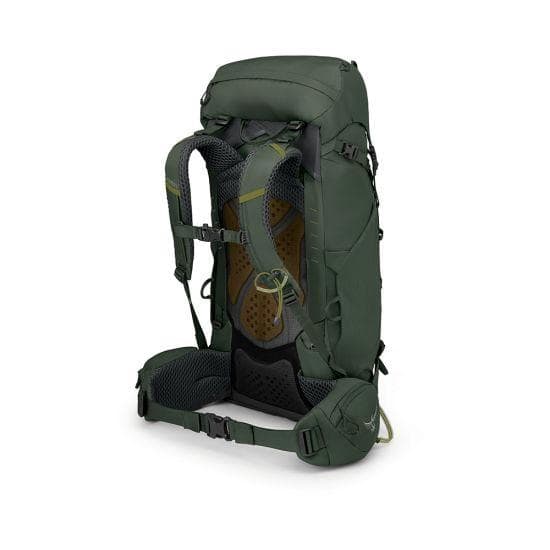
For those quick weekend getaways, the Osprey Kestrel 38 hits the sweet spot between capacity and portability. It’s big enough to carry all you need for a couple of nights in the wild, but small enough to use as a day pack if needed.
The integrated rain cover is a nice touch, saving you from having to buy one separately. Just don’t try to squeeze a week’s worth of gear into it – there’s a limit to its magic!
| Product Name | Capacity | Ideal Use | Price |
|---|---|---|---|
| Osprey Kestrel 38 | 38L | Shorter trips, weekend hikes | £125 |
Best for Tech-Savvy Campers: Arc’teryx Bora 65
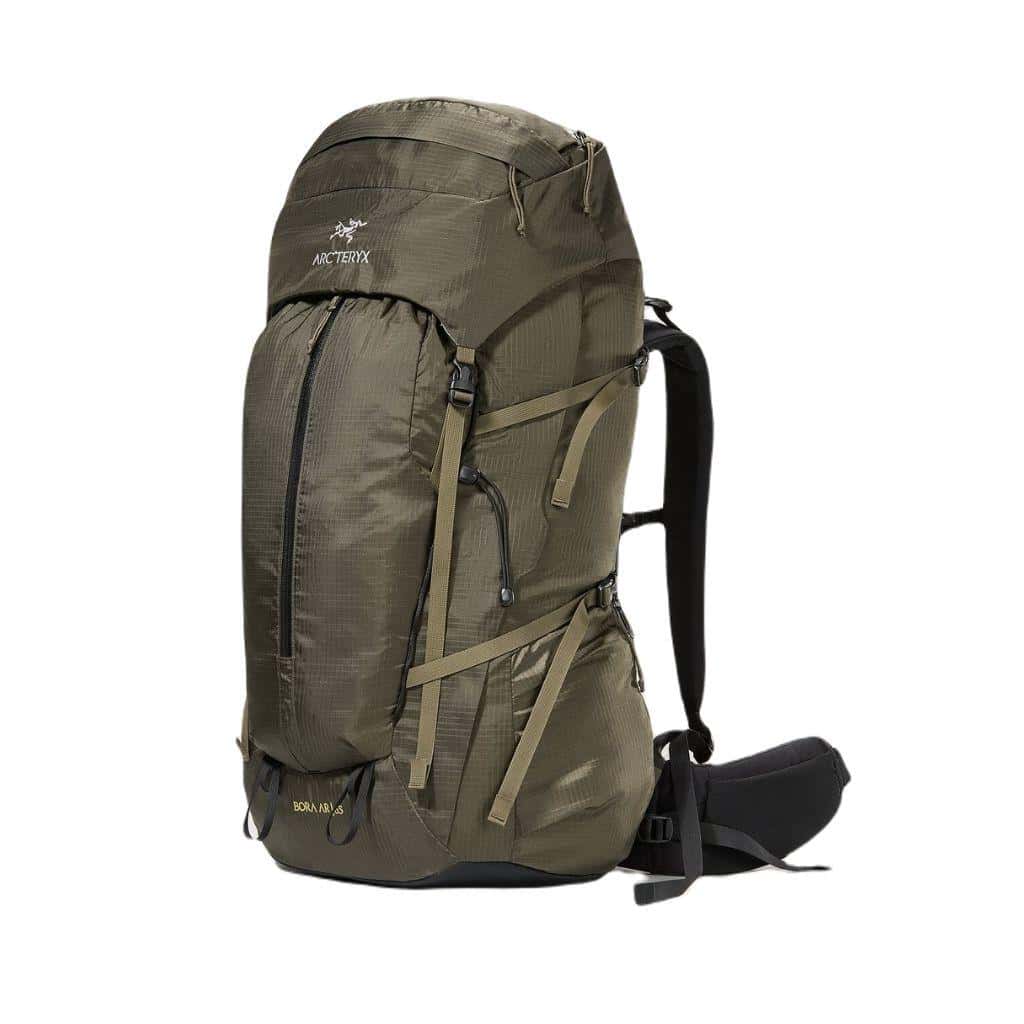
If you like your gear cutting-edge, the Arc’teryx Bora 65 will be right up your alley. With its weather-resistant material and RotoGlide hip belt that moves with your body, it’s like something out of a gear junkie’s dream.
The side-access zipper makes it easy to grab items without unpacking, and the kangaroo pocket is perfect for stashing wet gear. Be prepared for some sticker shock, though – all this tech doesn’t come cheap.
| Product Name | Capacity | Ideal Use | Price |
|---|---|---|---|
| Arc’teryx Bora 65 | 65L | High-tech, advanced backpacking | £280 |
Best for Versatility: Sierra Designs Flex Capacitor 25-40
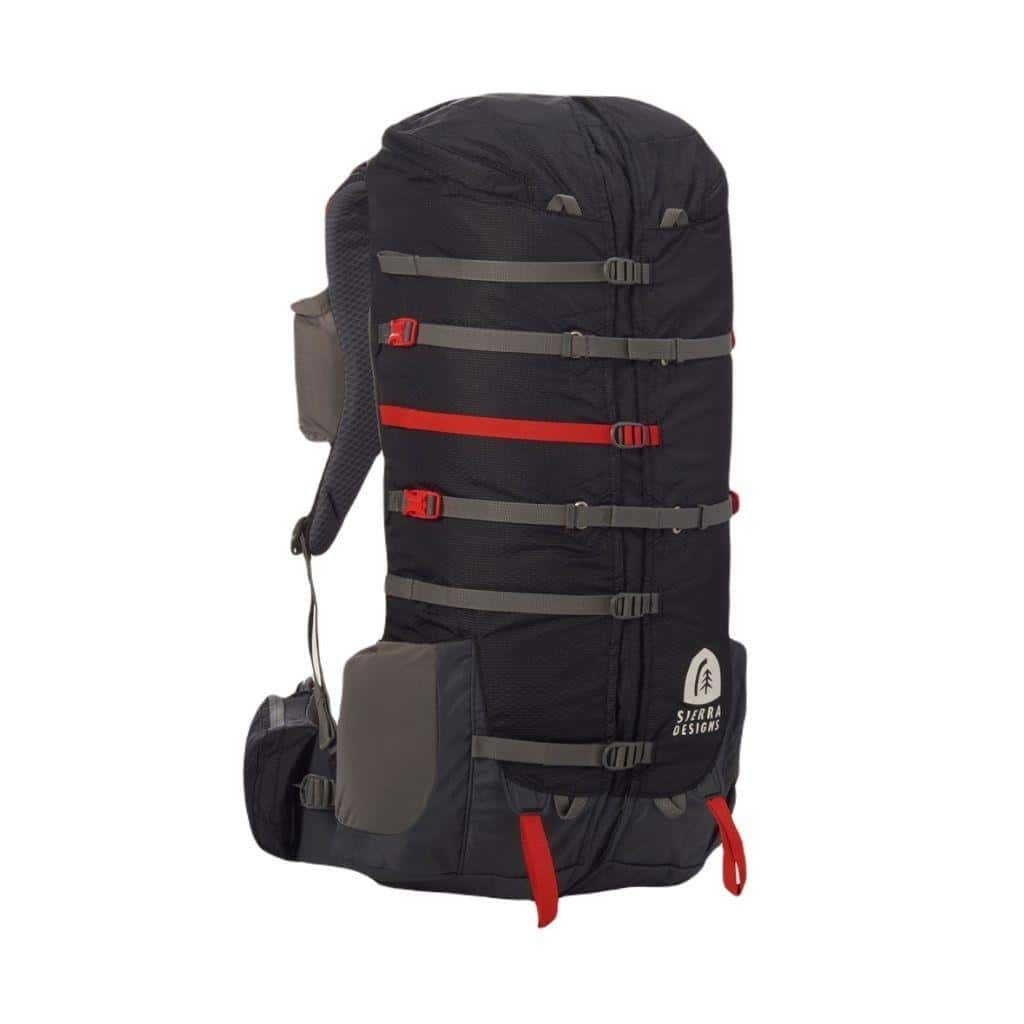
Can’t decide between a weekend pack and something for longer trips? The Sierra Designs Flex Capacitor 25-40 has you covered. This clever pack can expand from 25 to 40 litres, adapting to your needs.
The removable lid can be used as a daypack, giving you even more flexibility. It’s not the most feature-rich pack out there, but its versatility makes it a great all-rounder for those who don’t want to buy multiple backpacks.
| Product Name | Capacity | Ideal Use | Price |
|---|---|---|---|
| Sierra Designs Flex Capacitor 25–40 | 25–40L | Versatile backpack, multi-day trips | £154 |
How to Choose the Right Camping Backpack for You
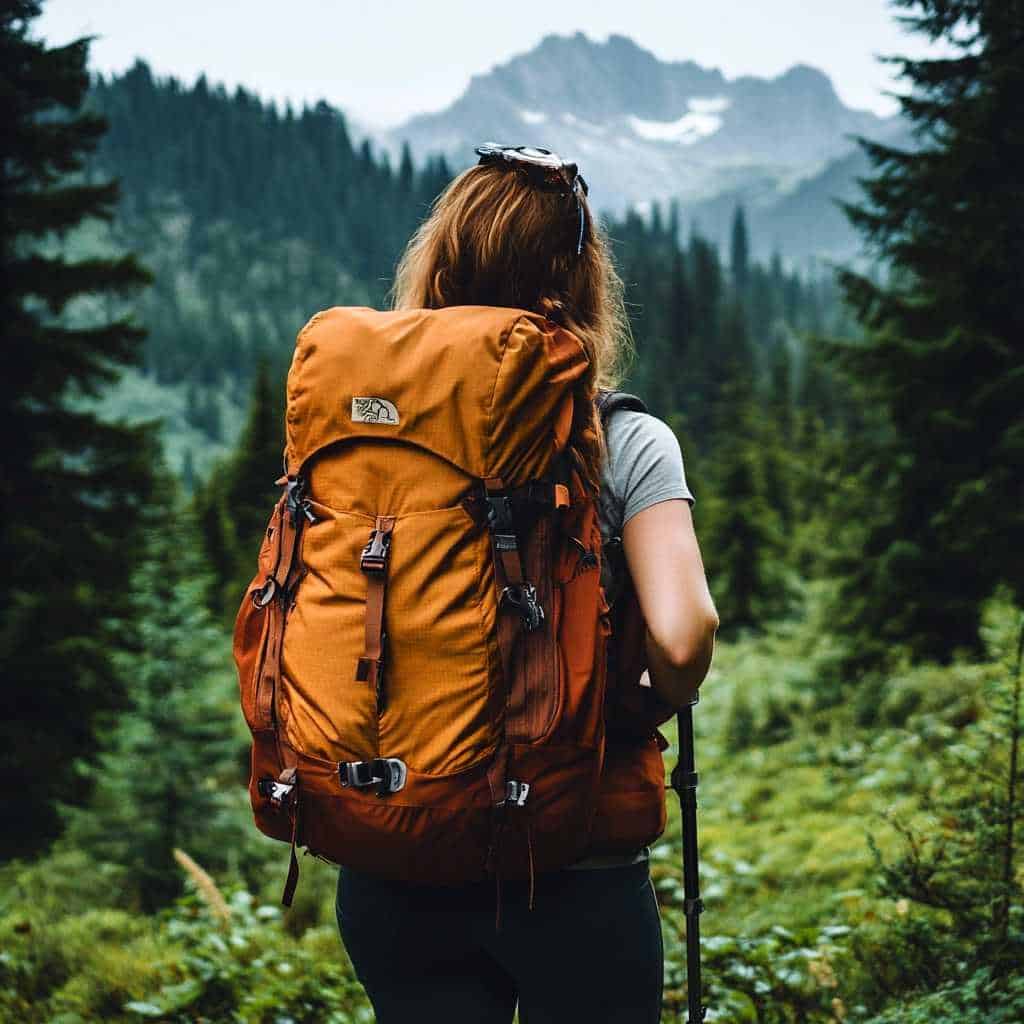
Alright, now that we’ve gone through the crème de la crème of camping backpacks, you might be thinking, “Great, but how do I actually choose?” Don’t worry, we’ve got you covered.
Choosing the right backpack is like finding the perfect dance partner – it needs to match your style, move with you, and not step on your toes.
If you’re planning on covering long distances, comfort is key. A pack that feels fine for an hour might feel like a torture device after eight.
Look for packs with robust suspension systems and plenty of padding – your future self will thank you when you’re on day five of your trek!
Assessing your needs (trip duration, type of camping, personal preferences)
First things first, you need to have a good think about what kind of camping you’ll be doing.
Are you a weekend warrior, popping out for quick overnight trips? Or are you planning to tackle the Pacific Crest Trail? The length and type of your trips will heavily influence the size and features you need in a backpack.
For those quick weekend jaunts, a 40–50 litre pack should do the trick. But if you’re planning on being out for a week or more, you might want to look at something in the 60–80 litre range. Remember, though, a bigger pack doesn’t necessarily mean a better trip. Sometimes, less really is more.
Consider the type of camping you’ll be doing, too. If you’re into ultralight backpacking, you’ll want a pack that’s as light as a feather. But if you’re more of a “bring the kitchen sink” kind of camper, you’ll need something with a bit more structure and support.
Importance of proper fit and sizing
Now, here’s where things get personal. A backpack is like a good pair of shoes – if it doesn’t fit right, you’re in for a world of discomfort. Most backpacks come in different sizes or have adjustable suspension systems. Don’t just guess your size – get measured!
The key measurements you need are your torso length and your hip circumference. Your local outdoor store should be able to help you with this, or you can rope in a friend and do it yourself with a flexible tape measure. Once you’ve got your measurements, you can narrow down your options to packs that’ll actually fit you properly.
Remember, the hip belt should sit right on top of your hip bones, not around your waist. And when you’ve got the pack on, there should be no gap between the shoulder straps and your shoulders. If you can slide more than two fingers between the strap and your shoulder, the pack’s probably too big for you.
Balancing features with weight
It’s easy to get caught up in all the fancy features when you’re shopping for a backpack. Ooh, look at all those pockets! And that built-in whistle! And is that a secret compartment?
But here’s the thing – every feature adds weight. And when you’re lugging that pack up a mountain, every gramme counts. So, think carefully about which features you really need. That fancy built-in solar panel might seem cool, but if you’re only going out for weekend trips, is it worth the extra weight?
That said, don’t skimp on important features just to save a few grammes. A good suspension system, comfortable shoulder straps, and a sturdy hip belt are worth their weight in gold when you’re on the trail.
Considering your budget
Let’s talk money, honey. Camping backpacks can range from budget-friendly to “do I really need both kidneys?” expensive. While it’s true that you often get what you pay for, you don’t necessarily need to remortgage your house to get a good pack.
Set a budget before you start shopping, but be realistic. A good backpack is an investment that can last for years if you take care of it. If you’re serious about camping and hiking, it might be worth spending a bit more for a pack that’ll keep you comfortable on the trail and stand the test of time.
That said, there are some great budget options out there. Brands like REI Co-op and Decathlon offer solid packs at wallet-friendly prices. And don’t forget to keep an eye out for sales – you can often snag a high-end pack at a bargain price if you’re patient.
Sustainable and Eco-Friendly Camping Backpacks
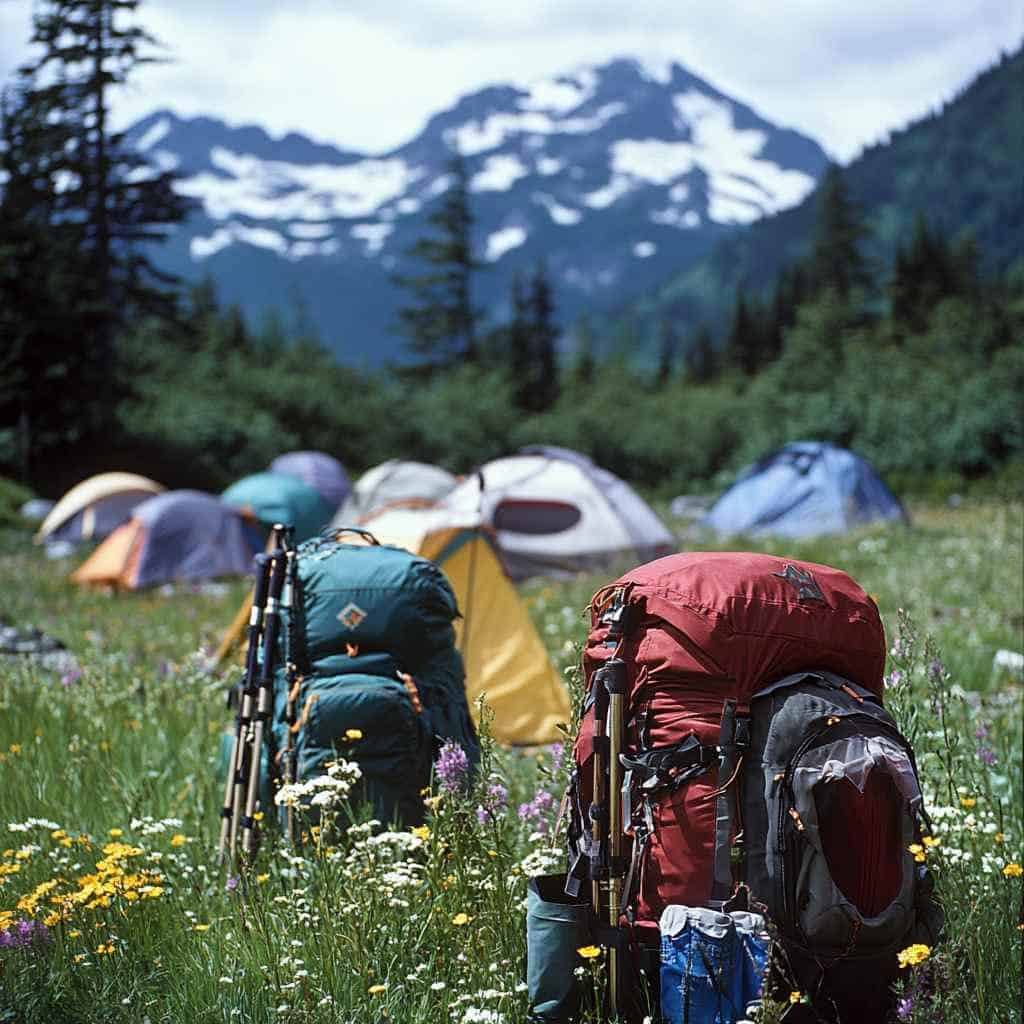
Now, let’s talk about something that’s becoming increasingly important in the outdoor gear world – sustainability. After all, if we’re going to enjoy the great outdoors, we should do our part to protect it, right?
Overview of sustainable materials used in backpack production
The outdoor industry has come a long way in terms of sustainable materials. These days, you can find backpacks made from all sorts of eco-friendly materials. Here are a few to keep an eye out for:
- Recycled Polyester: This material is often made from recycled plastic bottles. It’s durable, water-resistant, and gives those pesky plastic bottles a second life.
- Organic Cotton: While not as water-resistant as synthetic materials, organic cotton is grown without harmful pesticides and uses less water than conventional cotton.
- Hemp: This wonder material is naturally antimicrobial, durable, and requires less water to grow than cotton.
- Recycled Nylon: Similar to recycled polyester, this material gives new life to old nylon products.
Brands focusing on environmentally friendly practices
Several brands are leading the charge when it comes to sustainable backpacks. Patagonia has been a leader in using recycled materials. It even encourages customers to fix their gear instead of buying new ones.
Osprey has committed to using recycled materials in all of their main fabric lines by 2024. And smaller brands like Cotopaxi are making waves with their use of repurposed materials and ethical manufacturing practises.
The impact of choosing eco-friendly gear
Choosing an eco-friendly backpack might seem like a small thing, but it can have a big impact. By supporting brands that prioritise sustainability, you’re sending a message to the industry that this is important to consumers.
Plus, many of these sustainable materials are just as durable (if not more so) than their conventional counterparts. So you’re not just helping the planet – you’re likely getting a great pack that’ll last for years to come.
Remember, though, that the most sustainable backpack is the one you already own. If your current pack is still in good nick, consider repairing or upcycling it before buying a new one. Mother Nature will thank you!
Women-Specific and Unisex Backpack Designs
Ladies, listen up! And gents, you might want to pay attention too, because this could be useful info for the women in your life. Let’s chat about women-specific backpacks and why they’re not just ‘shrink it and pink it’ versions of men’s packs.
Differences in design and fit for women’s backpacks
Now, I know what you might be thinking. “Surely a backpack is a backpack, right?” Well, not quite. Women’s bodies are generally built differently from men’s, and backpack designers have cottoned on to this fact.
Women’s backpacks typically have:
- Shorter torso lengths: Women generally have shorter torsos than men of the same height.
- Narrower shoulder straps: These are designed to fit more comfortably on narrower shoulders.
- Differently shaped hip belts: Women’s hip belts are often more contoured to fit the typically wider hips of female bodies.
- S-shaped shoulder straps: These are curved to accommodate the breasts and prevent the straps from causing discomfort or chafing across the chest.
These design differences might seem small, but they can make a world of difference when you’re hauling a heavy pack for hours on end.
It’s like the difference between wearing shoes that fit perfectly and ones that are just a little off. You might not notice it at first, but after a long day, your feet (or in this case, your back, and shoulders) will definitely feel it.
Advantages of gender-specific backpacks
The main advantage of gender-specific backpacks is, quite simply, comfort. A pack that fits your body better will be more comfortable. This means you can carry more weight for longer without feeling like you’ve been fighting a bear.
But it’s not just about comfort. A properly fitting pack can also help prevent injuries. When a backpack fits well, it distributes weight evenly across your body, reducing strain on any one area. This can help prevent back pain, shoulder strain, and even improve your balance on tricky terrain.
Top unisex options that work well for all body types
Now, don’t worry if you can’t find a women-specific pack that tickles your fancy. Many unisex packs are designed to be adjustable enough to fit a wide range of body types. Here are a few that tend to work well for both men and women:
- Osprey Aether/Ariel series: These packs come in multiple sizes and have adjustable harnesses, making them adaptable to different body shapes.
- REI Co-op Flash 55: This pack has an adjustable torso length and hip belt, allowing for a customised fit.
- Granite Gear Crown2 60: Known for its highly adjustable suspension system, this pack can fit a wide range of body types.
Remember, the key is to try on different packs and see what feels best on your body. Don’t just go for a pack because it’s labelled as “women’s” or “unisex” – fit is personal, and what works for one person might not work for another.
Tech-Savvy Features in Modern Camping Backpacks
Alright, tech lovers, this one’s for you! Gone are the days when a backpack was just a sack with straps. These days, backpacks are getting smarter, and some of them have more gadgets than your average spy movie.
Let’s take a look at some of the coolest tech features you might find in modern camping backpacks.
Built-in solar panels and power banks
Imagine this: you’re in the wilderness; your phone is dead, and you can’t check your map app or take a perfect sunset picture for Instagram.
Nightmare, right? Well, some clever backpack designers have come up with a solution – built-in solar panels and power banks.
Packs like the Voltaic Systems Array have solar panels integrated into the back panel, allowing you to charge your devices as you hike. It’s like having a portable power station strapped to your back. Pretty nifty, eh?
But before you get too excited, remember that these features come with trade-offs. Solar panels and power banks add weight to your pack, and they’re not always as efficient as you might hope.
Plus, if you’re hiking through dense forest, you might not get enough sunlight to make them worthwhile.
RFID-protected pockets
In this digital age, identity theft isn’t just something that happens online. RFID skimming is a real threat, even in the great outdoors. That’s why some backpacks now come with RFID-protected pockets.
These pockets are lined with materials that block RFID signals, keeping your credit cards and passport safe from digital pickpockets. It’s like a tiny fortress for your sensitive information.
Packs like the Pacsafe Venturesafe have this feature built-in, giving you one less thing to worry about on your adventures.
Smart tracking devices for gear safety
Ever had that heart-stopping moment when you think you’ve lost your backpack? Well, some modern packs come with built-in tracking devices.
These small devices let you find your pack on your phone. This gives you peace of mind, no matter where you are at a busy campsite or at an airport.
The North Face, for example, has partnered with Tile to create packs with built-in bluetooth trackers. It’s like having a homing beacon for your gear. Just don’t forget to charge the tracker!
Backpacks for Specialised Camping Activities
Not all camping trips are created equal, and neither are all backpacks. Let’s explore some specialised packs designed for specific types of outdoor adventures.
Backpacks designed for photographers
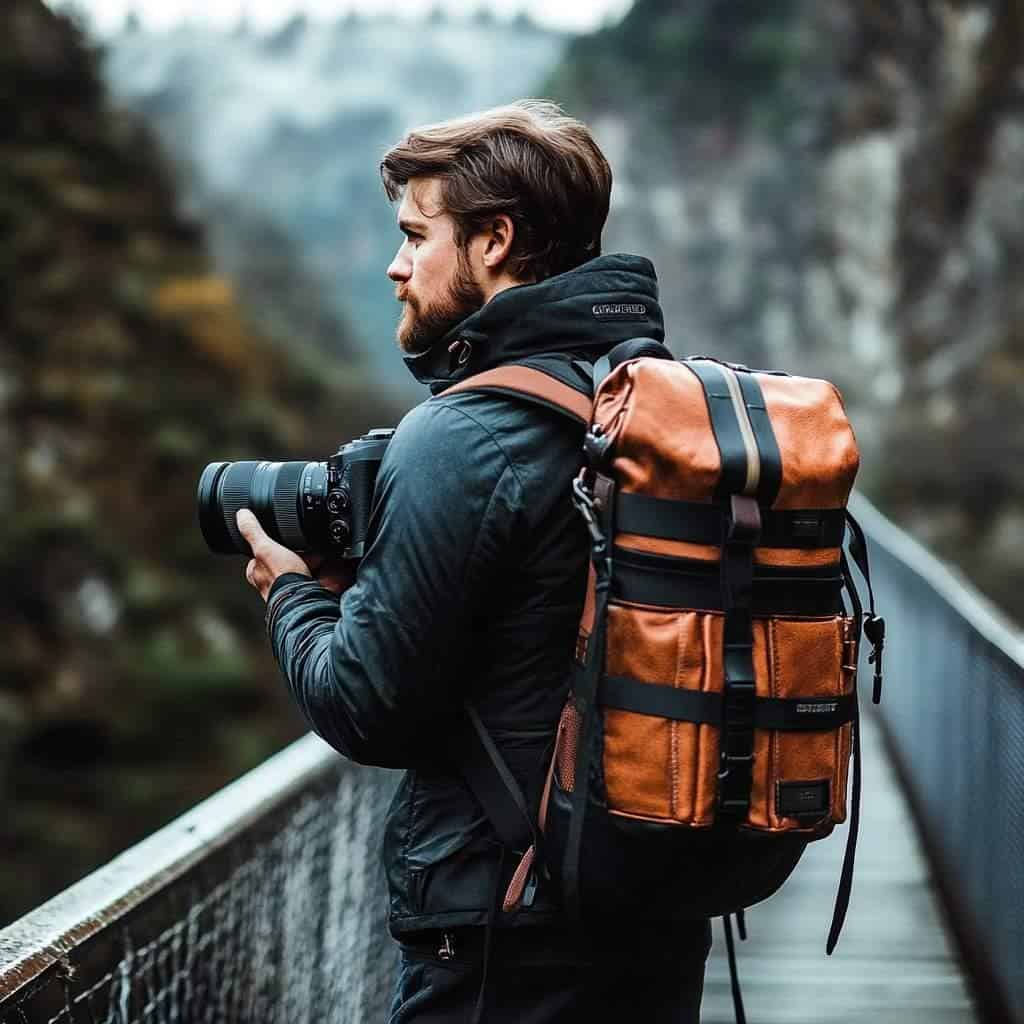
For those of you who live by the motto “pics or it didn’t happen,” there are backpacks specifically designed to carry camera gear into the wilderness.
These packs, like the Lowepro PhotoSport, have soft pockets for cameras and lenses. They also have easy-to-reach side panels so you can grab your gear quickly when you want to take a perfect picture.
But here’s the catch – camera backpacks often sacrifice some space for camping gear in favour of protecting your precious pixels. So if you’re planning a longer trip, you might need to get creative with your packing or consider a pack that has removable camera modules.
Packs suitable for climbing and mountaineering
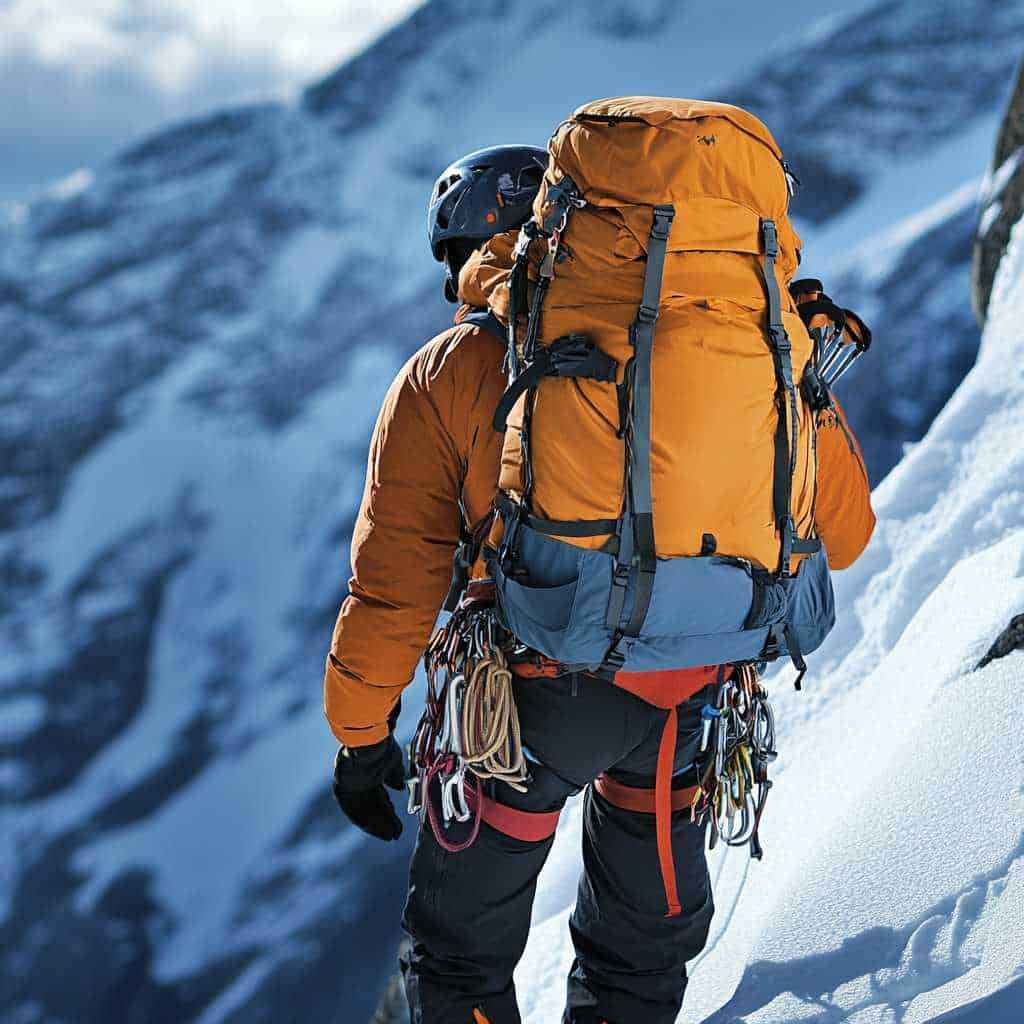
If your idea of a good time involves vertical rock faces or icy peaks, you’ll want a pack that’s up for the challenge. Climbing and mountaineering packs, like the Black Diamond Speed 40, are designed to be sleek and low-profile, so they don’t get in the way when you’re reaching for that next hold.
These packs often have features like reinforced crampon patches, ice axe loops, and rope-carrying systems. They’re typically more durable than standard hiking packs, built to withstand scrapes against rock faces. Just remember, these specialised features often come at the cost of some comfort on long approaches.
Hybrid backpacks for bike-packing and camping
For those who like to mix their adventures, hybrid packs that work for both biking and hiking are a game-changer. These packs, like the Osprey Escapist 32, are designed to be stable and comfortable whether you’re on two wheels or two feet.
They often have features like helmet attachments, bike light loops, and hydration compatibility. The trade-off? They might not have quite as much capacity as a dedicated hiking pack, so you’ll need to pack smart if you’re planning a longer trip.
Budget-Friendly Alternatives to Premium Backpacks
Let’s face it, not all of us can drop a month’s rent on a backpack. But fear not, budget-conscious adventurers! There are plenty of wallet-friendly options that’ll still get the job done.
Quality options under £100
Believe it or not, you can find some solid backpacks for under a hundred quid. The Teton Sports Scout 3400, for example, offers 55 litres of capacity and decent comfort for a fraction of the price of premium packs.
Another option is the Mountaintop 70L+10L, which gives you a whopping 80 litres of storage for less than the cost of a fancy dinner out. Are these packs going to have all the bells and whistles of a top-end model? No. But will they carry your gear and keep you reasonably comfortable on the trail? Absolutely.
Features to prioritise when on a tight budget
When you’re shopping on a budget, you need to focus on the essentials. Here’s what to look for:
- Comfort: A decent suspension system and padded straps are worth their weight in gold.
- Durability: Look for ripstop nylon or similar tough materials.
- Capacity: Make sure the pack can hold all your gear.
- Water resistance: A rain cover or water-resistant fabric can save you a lot of headaches.
Remember, you can always add features like extra pockets or gear loops later with a bit of DIY spirit.
Tips for finding good deals on high-quality backpacks
If you’ve got your heart set on a premium pack but your wallet’s not on board, don’t despair. Here are some tips for scoring a deal:
- Shop end-of-season sales: Retailers often slash prices on last season’s models.
- Check out outlet stores: Both online and brick-and-mortar outdoor gear outlets can offer great deals.
- Consider second-hand: Sites like eBay or gear trade groups on Facebook can be goldmines for lightly used, high-quality packs.
- Sign up for retailer newsletters: They often send out exclusive discounts to subscribers.
Remember, a good backpack is an investment. If you can stretch your budget a bit, it might pay off in the long run with a pack that lasts for years of adventures.
Common Backpack Issues and How to Solve Them
Even the best backpacks can sometimes give us grief. Let’s tackle some common issues and how to sort them out.
Addressing discomfort and chafing
There’s nothing worse than a pack that feels like it’s trying to saw you in half. If you’re experiencing discomfort or chafing, try these fixes:
- Adjust your straps: Make sure your hip belt is sitting on your hip bones, not your waist.
- Use moleskin or athletic tape on hotspots before they become blisters.
- Consider adding aftermarket padding to trouble spots.
- Make sure your pack isn’t too big or too small for your torso length.
Fixing broken zippers and tears
Zippers and fabric can fail at the most inconvenient times. Here’s how to deal:
- For stuck zippers, try rubbing a candle or bar of soap along the teeth.
- Small tears can be patched with tenacious tape or a gear repair patch.
- For bigger repairs, consider learning to sew or taking your pack to a gear repair shop.
Waterproofing techniques for non-water-resistant packs
Not all packs are created equal when it comes to keeping your gear dry. If your pack isn’t naturally water-resistant, try these tricks:
- Use a pack rain cover. Many packs come with one, or you can buy one separately.
- Line your pack with a trash compactor bag. It’s cheaper than dry bags and works just as well.
- Use silicone sealant on the seams of your pack for added water resistance.
Remember, no pack is completely waterproof. Always pack essential items like electronics and spare clothes in individual dry bags for extra protection.
Your Adventure Awaits: The Perfect Pack is Out There
Feeling a bit overwhelmed, are you? Like you’ve just climbed Everest, only to realise there’s another peak behind it? Choosing a backpack can be a right faff, but don’t let it do your head in.
This guide’s got your back, literally. We’ve sifted through the chaff so you don’t have to, serving up the cream of the crop. Whether you’re a weekend warrior or a trail-hardened trekker, there’s a perfect pack waiting for you.
So, chin up and shoulders back! Your next adventure is calling, and with the right backpack, you’ll be ready to answer. Go on, give the great outdoors a run for its money!

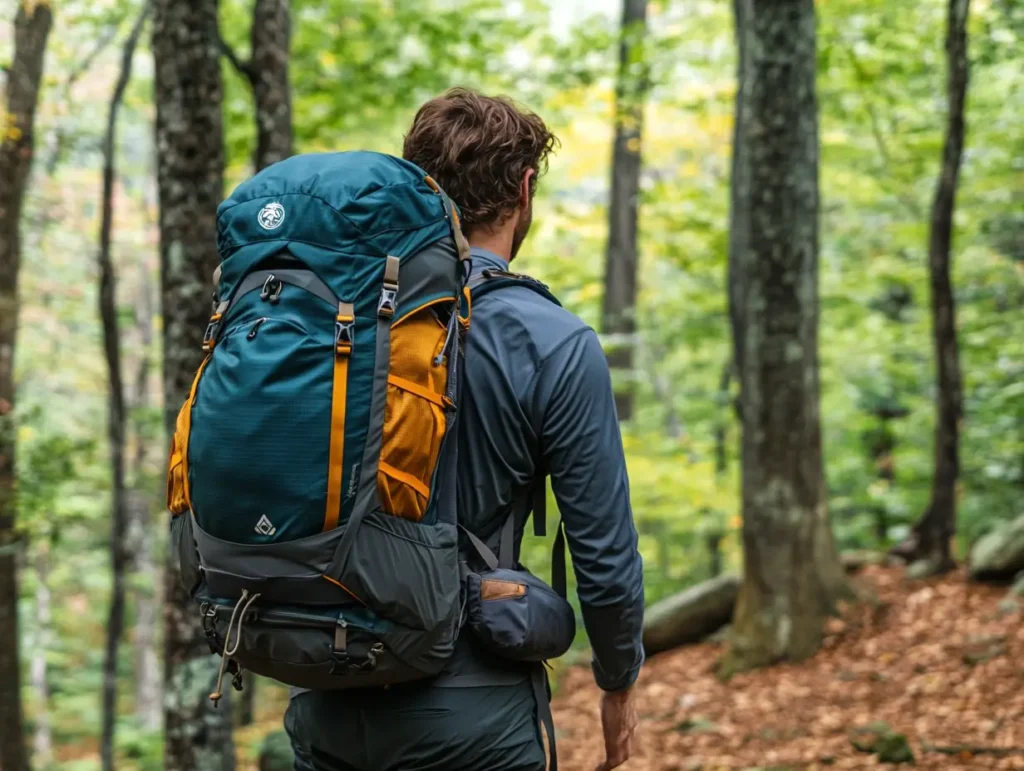

Pingback: 75 Hiking Tips for Beginners (for 2024)
Pingback: Camping Essentials: Best Sleeping Bags for Camping UK | WBH